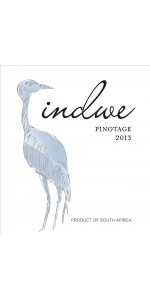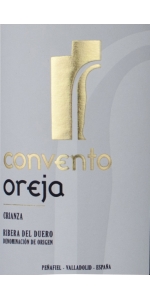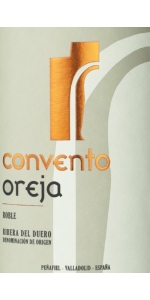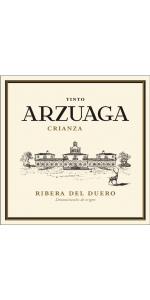Convento Oreja Ribera del Duero Crianza 2019
6 bottles with free shipping for: $162.00
12 bottles with free shipping for: $270.00
| BUY MORE! SAVE MORE! | ||||||||||||||||||||
|
| Country: | Spain |
| Region: | Ribera del Duero |
| Winery: | Convento de Oreja |
| Grape Type: | Tempranillo |
| Vintage: | 2019 |
| Bottle Size: | 750 ml |
Convento Oreja Ribera del Duero Crianza is made from 100 percent Tempranillo.
Bright cherry color. On the nose you will find plenty of fruit aromas, well balanced as well as some reminiscences of spices that are appreciable. The oak presence gives elegant hints of black chocolate and vanilla. On the palate, the wine is very smooth and well balanced with the right amount of acidity. Fresh, long lasting and elegant.
The wine went through malolactic fermentation. The wine was aged 12 Months in French Oak barrels. Before bottling, the wine was slightly filtered.
Review:
A bouquet of Luxardo cherry, blackberry preserves and lavender wafts from the glass. Surprisingly juicy on entry, this wine has flavors of pomegranate, ripe cherry, orange zest, dried thyme, dark chocolate and violet. Opulent tannins build in volume and then recede into a finish that is filled with bright fruit notes. — Mike DeSimone
- Wine Enthusiast (June/July 2023), 94 pts
The Convento de Oreja Estate
The winery is located near the town of Peñafiel, and its name Oreja (ear) comes from the fact that Convento is located on a bend in the Duero river. This exagerated bend/oxbow is referred to as an oreja or ear shaped. Owner Antonio Vaquero lives and works in Madrid, but hails from Peñafiel, where he has been managing family vineyards. Recently, Antonio and a small group of associates decided to build their own winery, hence Convento de Oreja.
Convento de Oreja does not own winemaking facilities, but supervises the vinification in a modern facility in Peñafiel. Once the wine has been fermented/macerated, the resulting juice is barrel aged.
The Convento de Oreja Vineyard
The vines are 10-15 years old except for a small plot of 40 year old vines. The wines of Convento de Oreja are all 100% Tempranillo. Currently they own 6 hectares (14.82 acres) and manage 12 hectares more. Recently they planted 4 hectares more and all soil types are nutrient poor alluvial soils with a mix of sand and gravel. Deeper down the soil is clay and limestone, good for water retention. For now they make both Joven and Crianza style wines.
James Goddard was an ancestor of the Clarke family. Born in West Sussex, England in 1823, James spent his 74 years as a sailor, a whaler, a bullock driver, farmer, prospector, miner and hotel keeper. From an illiterate runaway living rough on the streets of London, he became a rich, successful and admired pillar of South Australian society.
James arrived in Adelaide in 1839 as a 16-year-old sailor. Twelve years later, his life changed forever with the news of gold findings. For the next 20 years, James roamed the country learning the geology that improved his chances of prospecting.
James Goddard Shiraz is made from 100 percent Shiraz.
In 1870, he tried his luck near his farm in the Barossa Valley and discovered the region’s first gold deposits, creating the prosperous Lady Alice Mine. The Lady Alice Mine, though it is no longer operational, was & still is the most successful gold mine in South Australia. From these roots, the Thorn-Clarke family has been connected to the region for the last 150 years.
James Goddard Shiraz is a blend Shiraz sourced from the Milton Park vineyard in the north of Eden Valley, and the St Kitts vineyard in the far northern area of the Barossa. Fruit is harvested in the cool of the night to maintain maximum flavour and freshness and it is fermented for 8 days. The ferment is pumped over twice daily to extract the colour and flavour from the fruit. Once finished fermentation the wine was then matured in a blend of French and American oak for a period of 10 to 12 months depending on the vintage.
Deep vibrant red with purple hues to the rim. The nose shows lifted plums, vibrant purple berries and a delicate spice note. The palate has concentrated satsuma plum, blackberry with lovely charry oak in the background. Long, juicy and even with plush fruit on the finish.
Review:
“Blended from two estate vineyards, St. Kitts and Milton Park, this shiraz offers its richness without any aggression or overt perfume. It’s just lush and delicious, a friendly embrace of firm tannins and purple-red fruit. The texture and flavor combine in a saturated meatiness, for Korean barbecue.”
- Wine & Spirits Magazine, 92 points
Chakana Estate Malbec is made from 100 percent Malbec.
hakana is the name of the Southern Cross constellation. Its rotation in the sky throughout the year made it an effective agricultural calendar for the ancient Andean people.
The "yaguarete" (jaguar) on the label was known by the ancient Andean people as the "lord of the starred night"; the wildest known animal.
Chakana Estate Malbec is from Chakana's Altamira (3,200 ft elevation) and Gualtallary (5,500 ft elevation) vineyards.
The color is deep purple, very intense, typical of Malbec. Plum, brambly berries, spices and an iris/violet note are apparent on the nose. Intense, fruity flavors with velvety tannins.
Review:
- Tim Atkin (2023 Argentina Special Report), 93 pts
Cellar for up to 8 years. No need to decant before serving.
El Enemigo was founded by historian Adrianna Catena, who is also Nicolas Catena’s youngest daughter, and Catena Zapata’s chief winemaker Alejandro Vigil in 2009. These two legendary figures on the Argentine wine scene came together over a mutual love for literature and philosophy, and decided to create their own wine label that would offer a unique taste of Argentina’s exceptional terroir and its Old World winemaking heritage.
Today the brand is responsible for many of the most exciting wines coming out of Argentina, including this sensational single vineyard Bonarda. Bonarda is little-known in Europe these days, but it has a special place in Argentina where it’s considered the nation’s second red wine after Malbec. La Esperanza is a very special 150 year old vineyard that was about to be uprooted when it was discovered by Alejandro Vigil. Luckily he was able to save 5 hectares from which he makes a few hundred bottles of this wine each vintage.
Once in the winery this precious fruit is vinified with wild yeasts and the young wine ages in large foudres that are over 100 years old. The result is a remarkably elegant and vibrant red that’s bursting with luscious red cherries, plums and blackberries as well as hints of dark chocolate. A charming wine to serve with tomato-based dishes thanks to the refreshing acidity, smooth tannins, and bright fruit flavours.
Review:
Blackberry, red-plum and graphite on the nose, as well as herbal and smoky notes. It’s medium-to full-bodied with firm tannins. Fleshy texture on the palate with structure and a ink-like feel. Savory finish. Hints of chocolate at the end. Try after 2023.
-James Suckling 94 Points
La Despensa Boutique Field Blend is made from 45% Grenache, 35% Syrah, 15% Mourvedre and 5% Roussanne.
This is La Despensa's flagship Rhône-blend, produced from grapes from their own, organic vineyard in Colchagua. Their passion is to produce very high-quality grapes - it’s the vineyard work that they love the most. So this blend is always a little different year after year, as they make whatever the vineyard gives them. In 2020 they incorporated a little Roussanne to the blend, which adds some mouthfeel and a tiny background note of tropical fruit, to accompany the fresh fruit and structure that the other varieties bring out.
Review:
"A very vivid and bright nose with lots of red fruit and flowers. Some sweet currants, raspberries and pomegranate in the forefront followed by a nice touch of bay leaf, graphite and flowers. Juicy and bright on the palate with a medium body and firm and fresh tannins. Very drinkable. 45% grenache, 35% syrah, 15% mourvedre and 5% roussanne. Co-fermented. Enjoy now."
- James Suckling (February 2023), 92 pts
Thorn Clarke Single Vineyard Mataro is made from 100 percent Mataro.
The Single Vineyard Selection range focuses on single site, small batch wines, highlighting the true characteristics of each individual variety. Each block is hand selected by our winemaker and viticulturist each year, choosing the wines that best reflect the strengths of each individual vintage.
Striking with its inky red color and purple hues, a hallmark of a classic vintage. On the nose, briary black fruits are in abundance. Notes of Chinese five spice and currants also shine through. On the palate, blackberries and winter spice are evident. The generous and silky tannins in this wine support a long and complex finish.
The grapes were destemmed and fermented in 4 tonne open fermenters for a period of 10 days. The wine was pressed off into 10 year old oak where it was matured for a duration of 18 months before being racked in preparation for bottling. This wine has no filtration.
Indwe Pinotage Coastal Region is made from 100 percent Pinotage.
Pinotage is a true South African grape variety, Our signature grape smilar to the Blue Crane being our national bird. Indwe Pinotage grapes are meticulously sourced from our grape producers along the Coastal region of the Western Cape ensuring complexity, depth and purity of fruit. The wine is layered with sweet cherry notes, and subtle hints of mocha and vanilla flavors.
Convento Oreja Ribera del Duero Crianza is made from 100 percent Tempranillo.
Bright cherry color. On the nose you will find plenty of fruit aromas, well balanced as well as some reminiscences of spices that are appreciable. The oak presence gives elegant hints of black chocolate and vanilla. On the palate, the wine is very smooth and well balanced with the right amount of acidity. Fresh, long lasting and elegant.
The wine went through malolactic fermentation. The wine was aged 12 Months in French Oak barrels. Before bottling, the wine was slightly filtered.
Convento Oreja Ribera del Duero Roble is made from 100% Tempranillo
Deep black plum color with violet tones. Ripe fruit on the nose, mostly blackberries and raspberries, intermingled with hints of spice and leather. On the palate, it is warm, fresh and pleasant with a long finish.
Age of the vines: betwxeen 6 and 16 years old.
Vineyards' location: Comarca de Peñafiel.
Vinification is made in large 20,000-liter stainless steel tanks (200 hectoliters) with automated temperature control.
Fermentation lasted 5 days at 22°C temperature.
Total time for maceration lasted 9 days.
Malolactic Fermentación was completed during the month of November.
Wine was aged in French Oak barrels for a minimum of 4 months.
Review:
"Thoroughly Ribera del Duero in its power and austerity, this wine’s floral rose scents shade into blackness, lasting cleanly within a structure that’s both open and intense. There’s a hint of greenness from its time in American and French oak barrels, an edge that will tame grilled meats."
- Wine & Spirits (June 2022), 91 pts
Arzuaga Ribera del Duero Crianza 95% Tempranillo and 5% Cabernet Sauvignon.
Dark cherry color with purple highlights. Powerful nose and high aromatic diversity of ripe red and black fruits, spicy and balsamic notes, and a roasted finish. Soft and mellow in the mouth with a great fruitiness and length.
Review:
This is a big wine with alluring aromas of cedary oak and black fruit. Ripe palate of black berries, some dark chocolate and integrated, polished oak. Long spicy finish. Classy Ribera. -Decanter 95 Points
Arzuaga Ribera del Duero Crianza 95% Tempranillo and 5% Cabernet Sauvignon.
Dark cherry color with purple highlights. Powerful nose and high aromatic diversity of ripe red and black fruits, spicy and balsamic notes, and a roasted finish. Soft and mellow in the mouth with a great fruitiness and length.
Arzuaga Ribera del Duero Crianza 95% Tempranillo and 5% Cabernet Sauvignon.
Dark cherry color with purple highlights. Powerful nose and high aromatic diversity of ripe red and black fruits, spicy and balsamic notes, and a roasted finish. Soft and mellow in the mouth with a great fruitiness and length.
THIS OFFER IS FOR HALF-BOTTLES
Arzuaga Ribera del Duero Crianza 95% Tempranillo and 5% Cabernet Sauvignon.
Dark cherry color with purple highlights. Powerful nose and high aromatic diversity of ripe red and black fruits, spicy and balsamic notes, and a roasted finish. Soft and mellow in the mouth with a great fruitiness and length.
- back
Dr. Loosen Riesling Eiswein is made from 100 percent Riesling.
This vibrant, racy dessert wine conjures flavors of densely packed pear, apple and guava, with an intense, nervy edge in the aroma. It is luscious, silky and juicy on the palate, with bright acidity giving it a crisp, dynamic finish.
Review:
Bernardins Dry Muscat Dore des Bernardins is made from 100% white Muscat petit grains.
Doré des Bernardins is a dry white wine that is only produced in years when the Muscat à petit grains crop is large enough. Grapes are picked at the same ripeness level as for the Vin Doux Naturel. In contrast to Muscat de Beaumes de Venise, the fermentation isn’t stopped, giving a fruity dry wine with intense Muscat aromas.
Dry Muscat with a fruity, nice perfume, honeysuckle and melon aromas, lively rounded mouth-feel. Elegant, fresh and medium-bodied.
Situation
Spreads out over the south-east side of the Dentelles de Montmirail hills, in Beaumes de Venise in the southern part of the Rhone valley.
Terroir
On a poor sandy, hungry and arid soil consisting of tender limestone and gritty zones of sandy mollasse.
In the vineyard
The vineyards and their terroir are the essence of our wines. This is where everything starts and where we focus our efforts throughout the year. You can’t make great wine without great grapes.
The viticulture is essentially done by hand. Five people work full-time in the vineyards. They are supplemented by seasonal employees who work during bunch thinning and the harvest in order to bring out the very best in our vines. Working by hand and the attention each vine gets are fundamental. Pruning, de-budding, trellising, leaf removal and picking are thus carried out by hand with the utmost care.
We prepare the soil by using good old-fashioned ploughing. Organic compost is made from grape marc (the discarded stalks and skins).
As a way of protecting the plants, we only use phytosanitary products when necessary and within strict guidelines by staggering the treatments appropriately, to minimise the amount of chemicals used. We prefer to use as much as possible manual and organic techniques. Leaving natural grass cover, removing buds and leaves from the vines, preserving biodiversity around the vineyard: olive, almond and cypress trees, wild rosemary and capers.
Winemaking
Our Doré des Bernardins is a dry white wine that we only produce in years when the Muscat à petits grains crop is large enough. We pick the grapes at the same ripeness level as for the Vin Doux Naturel. In contrast to Muscat de Beaumes, the fermentation isn’t stopped, giving a fruity dry wine with intense Muscat aromas.
Nicely chilled, this dry white wine is great as an aperitif or with asparagus, seafood, king prawns, fish.

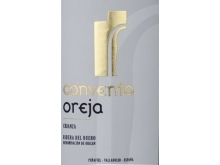

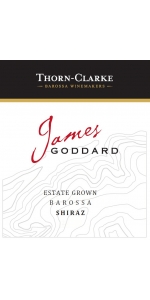
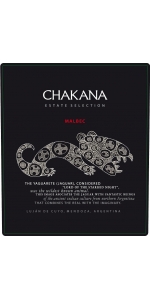
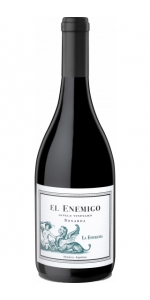
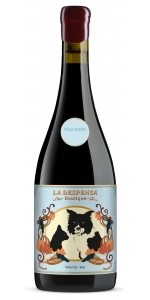
-150x300.jpg)
